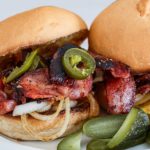The new regulations differ from region to region, but the general drift is to reduce the availability of sugar, salt, and fat laden foods and snacks, and replace them with more nutritious healthy foods and snacks.
In the face of what many see as an exploding obesity epidemic among both children and adults, a growing number of state and regional legislatures are passing laws that prohibit the sale of junk foods in school vending machines and cafeterias.
The money issue
As everybody in the business knows, “healthy” vending machines can not properly compete with “unhealthy” ones until attractive, good-tasting healthy snack products are made available at a competitive price.
Such good intentions are not always easy to implement. Money raises its ugly head at numerous points along the way, making it difficult to move to healthier alternatives.
Vending machine operators naturally prefer to fill their machines with junk food because these “foods” generally have two major advantages over other healthier alternatives. They have a higher profit margin, and they sell better because kids (for whatever reason) prefer them. When they fill up their machines with pop and candy bars, this means the vending operators can offer schools attractive profit-sharing incentives.
And student organizations themselves are split on the wisdom of going “healthy”. According to Laura Thomas, a senior at Wilcox High School in Santa Clara, California, “These sales fit the needs of the clubs because they can sell at school, during lunch or in class.
In other words, not allowing junk food sales by student groups would make fund-raising programs in the schools much more difficult, and would threaten the current fund-raising structure that feeds cash directly into the school program. Of course not everyone agrees this would be a bad thing. As another California student, Leah Karlins, a junior at Branham High School in San Jose said “it seems no one is asking the obvious question– why do our schools need to sell brownies to pay for sports teams and clubs?”
Meal changes don’t come easily
This fact supports the claim that what schools really should be doing is teaching about nutrition and the importance of physical activity, and using school programs to set an example– as a matter of “putting your money where your mouth is”.
And milk is even mandated within the U.S. federal school guidelines which require schools to offer only milk to drink, and include it in the base price of the lunch meal.
The bottom line is that the problem of poor eating habits among children is not something that is likely to go away quickly. While schools may dominate a child’s daily activities, they still only account for one meal a day. What the children are doing for the rest of their meals is even more important.
Lunch programs, vending machines, and school activity programs are not solutions to the problems of overweight and inactivity.
Most school boards in the U.S. receive a meal subsidy from one or more levels of government, so they must keep their costs below that level. These standards are sometimes the result of intense industrial lobbies that appear to encourage “healthy” change, but can also make it difficult.
Long-standing policies of the U.S. Department of Agriculture tend to discriminate in favor of diets that are heavy in meat and milk. The Physicians Committee for Responsible Medicine notes that meat alternatives are not subsidized by government, while meat and meat products are.
Menu changes usually involve a good deal of experimentation and have to be introduced slowly. Students are not going to switch to “eating healthy” without a gradual and relatively long transition period.
Milk production is subsidized, but not the production of low-fat alternatives. And milk is even mandated within the U.S. federal school guidelines which require schools to offer only milk to drink, and include it in the base price of the lunch meal.
According to Laura Thomas, a senior at Wilcox High School in Santa Clara, California, “These sales fit the needs of the clubs because they can sell at school, during lunch or in class. In other words, not allowing junk food sales by student groups would make fund-raising programs in the schools much more difficult, and would threaten the current fund-raising structure that feeds cash directly into the school program. As another California student, Leah Karlins, a junior at Branham High School in San Jose said “it seems no one is asking the obvious question– why do our schools need to sell brownies to pay for sports teams and clubs?”
When it comes to changing cafeteria menus, there are similar problems. Not only is it usually less expensive to offer french fries every day, but it is much easier, takes less planning, and will probably be more broadly accepted by the students doing the eating.
The objective should be to have these habits carry over into the rest of their activities and choices. Lunch programs, vending machines, and school activity programs are not solutions to the problems of overweight and inactivity. They primarily serve as examples of a better lifestyle, and point children in a healthier direction.










